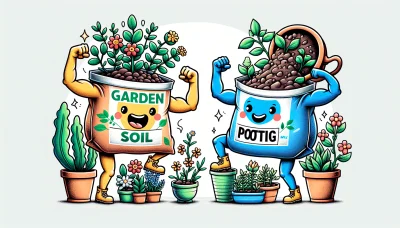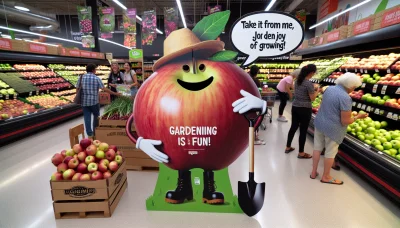Bonnie tomatoes Quiz
Test Your Knowledge
Question of
Introduction to Bonnie Tomatoes
Bonnie tomatoes are a popular choice among home gardeners for their robust flavor, versatility in the kitchen, and ease of growth. Originating from a lineage of carefully selected tomato varieties, these plants are designed to thrive in a wide range of climates and soil conditions, making them an excellent option for gardeners of all skill levels. Whether you're looking to make fresh salads, hearty sauces, or simply enjoy a delicious snack right off the vine, Bonnie tomatoes offer a superior taste and texture that sets them apart from standard varieties. Their significance in home gardening extends beyond their culinary uses, as they also contribute to sustainable gardening practices by encouraging local food production and reducing the need for store-bought produce.
Types of Bonnie Tomatoes
- Beefmaster Tomato
- Better Boy Tomato
- Big Beef Tomato
- Brandywine Pink Tomato
- Celebrity Tomato
- Cherokee Purple Tomato
- Early Girl Tomato
- Fourth of July Tomato
- German Johnson Tomato
- Green Zebra Tomato
- Mortgage Lifter Tomato
- Roma Tomato
- San Marzano Tomato
- Sweet Million Cherry Tomato
- Yellow Pear Tomato
How to Plant Bonnie Tomatoes
Planting Bonnie tomatoes can be a rewarding experience for any gardener. Here's a simple guide to get you started from seed selection to planting. First, select high-quality Bonnie tomato seeds from a reputable supplier to ensure good germination and plant health. Begin by starting your seeds indoors about 6-8 weeks before the last expected frost in your area. Use a sterile seed starting mix and plant your seeds about 1/4 inch deep in small pots or trays, ensuring they have plenty of light and warmth to germinate effectively.
Keep the soil moist but not waterlogged, and maintain a temperature of around 70-75 degrees Fahrenheit. Once your seedlings have sprouted and have at least two sets of true leaves, they're ready to be transplanted. However, before planting them outside, it's crucial to harden off the seedlings by gradually exposing them to outdoor conditions over a week to prevent shock.
Choose a sunny spot in your garden with at least 6-8 hours of direct sunlight daily, as tomatoes thrive in warm conditions. Prepare the soil by incorporating plenty of organic matter to improve fertility and drainage. Dig holes about 2 feet apart to give your plants ample space to grow. Before removing the plants from their pots, water them well to minimize root disturbance. Gently place the seedlings in the holes, burying them up to their first set of leaves to encourage strong root development. Water the plants thoroughly after planting and maintain consistent moisture throughout the growing season.
With proper care, your Bonnie tomatoes will flourish, providing you with a bountiful harvest. Remember to support your plants with stakes or cages as they grow to keep the fruit off the ground and reduce the risk of disease. Enjoy the process and the delicious results of your gardening efforts!
Caring for Your Bonnie Tomato Plants
- Watering: Water your plants deeply and regularly, aiming for at least 1 inch of water per week. Water in the early morning to reduce evaporation and prevent diseases.
- Fertilizing: Apply a balanced fertilizer every 4-6 weeks or as needed, based on soil tests. Avoid over-fertilizing, which can lead to lush foliage but fewer tomatoes.
- Pruning: Prune your tomato plants to remove dead or diseased leaves and to support better air circulation. For indeterminate varieties, consider removing suckers to concentrate growth on the main stems.
Common Pests and Diseases
Bonnie tomatoes, like many other types of tomatoes, are susceptible to a range of pests and diseases that can hinder their growth and productivity. Common pests include aphids, tomato hornworms, and spider mites, which can be managed through regular monitoring, the use of insecticidal soaps, or introducing natural predators like ladybugs into the garden. Diseases such as blight, fusarium wilt, and verticillium wilt are also prevalent. These diseases often stem from fungal infections and can be mitigated by ensuring proper plant spacing for air circulation, rotating crops annually to prevent soil-borne diseases, and using disease-resistant tomato varieties. Regularly inspecting plants and promptly removing any that show signs of disease can help prevent the spread to healthy plants. Implementing these management strategies can help maintain a healthy and productive Bonnie tomato garden.
Harvesting and Storing Bonnie Tomatoes
Harvesting Bonnie tomatoes at the right time is crucial for ensuring the best flavor and longevity. These tomatoes are best picked when they are fully colored and have a slightly firm feel. It's important to gently twist the tomato off the vine or use a pair of clippers to avoid damaging the plant. Once harvested, avoid refrigerating Bonnie tomatoes as this can lead to a loss of flavor and a mealy texture. Instead, store them at room temperature on a countertop away from direct sunlight. If you need to store them for longer, consider a cool, dark place which can help preserve their freshness for a bit longer. Remember, these tomatoes are best enjoyed within a few days of picking for the ultimate taste experience.
Bonnie Tomatoes Recipes
| Recipe Name | Ingredients | Preparation Time | Cooking Time |
|---|---|---|---|
| Classic Tomato Salad | Bonnie tomatoes, olive oil, basil, salt, pepper | 10 mins | N/A |
| Tomato Basil Soup | Bonnie tomatoes, onion, garlic, vegetable broth, basil | 15 mins | 30 mins |
| Stuffed Bonnie Tomatoes | Bonnie tomatoes, rice, parsley, mint, olive oil, lemon juice | 20 mins | 45 mins |
| Fresh Tomato Pasta | Bonnie tomatoes, garlic, olive oil, basil, pasta | 10 mins | 15 mins |












